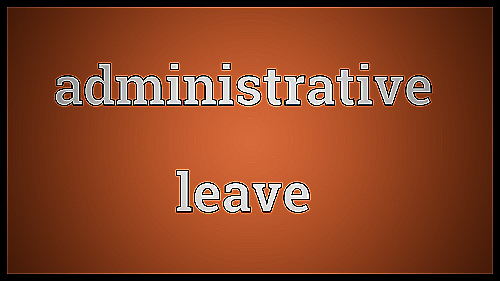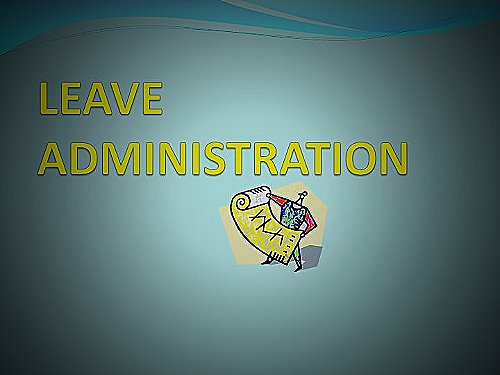Administrative Leave 2023: Mastering HR Strategies
Administrative leave, also known as paid leave, is a temporary leave from work given to an employee while still receiving their salary and benefits. The leave is usually granted to employees in non-business institutions, such as schools, hospitals, and the police force, and is an important component of human resource strategies.
The purpose of administrative leave is to remove an employee from the workplace when there are concerns about their behavior or performance, or when an investigation or review is needed. It is a tool for employers to maintain a safe, fair, and efficient workplace, and to protect both the interests of the employer and the employee.

Check out this Youtube video that exposes the shocking reality of a teacher getting suspended from their job and the administrative leave process which follows.
Why is administrative leave important?
Ensuring employee safety
Administrative leave plays a critical role in promoting employee safety. In situations where an employee is behaving disruptively or creating a hostile work environment, placing them on administrative leave offers a temporary separation from the work environment.
This helps ensure the safety of other employees while also providing an opportunity to address the situation and prevent potential harm.
Examples of situations that may require administrative leave for employee safety include cases of workplace violence, harassment, or threats of harm. By quickly removing the employee from the work environment, employers can improve the safety and well-being of other employees and reduce the potential for further incidents.
Maintaining productivity
Administrative leave can also help maintain productivity in the workplace. When an employee is disrupting the work environment or engaging in behaviors that are detrimental to the organization, it can have a negative impact on the productivity of other employees.
By placing the employee on administrative leave, employers can help limit the disruption caused by the employee’s behavior and maintain productivity. This provides other employees with a safe and productive environment to work in, helping ensure the success of the organization.
Legal compliance
Denying or inappropriately granting administrative leave can have serious legal implications for employers. This is because administrative leave is not only used to protect employee safety and maintain productivity, but it is also a legally mandated benefit for employees in specific situations.
For example, under the Family and Medical Leave Act (FMLA), employees are entitled to take leave for up to 12 weeks per year for certain family or medical reasons without losing their job or benefits. Employers who deny or inappropriately grant administrative leave in these situations can face serious legal consequences, including fines and legal action from employees.
By ensuring proper compliance with legally mandated administrative leave policies, employers can protect themselves from potential legal disputes and ensure the fair and equitable treatment of all employees.
Effective HR strategies for administrative leave
Establishing clear policies and procedures
One of the most important HR strategies for administrative leave is to establish clear policies and procedures. Having clear policies and procedures helps in preventing misunderstandings and conflicts between the employees and the management.
It also helps in ensuring that the administrative leave is being handled in a fair and consistent manner.
Administrative leave policies should be clearly defined, which should include the reasons for placing an employee on leave. The policies should also state the duration of the leave and the employee‘s rights during the leave period.
Having a clear and defined process for placing employees on leave can also assist in avoiding wrongful termination lawsuits if important steps are followed.
Training managers and employees
It is important to provide training to managers and employees about administrative leave policies and procedures. Managers and supervisors should be trained to ensure that they understand the policies and procedures for placing employees on leave.
They must be aware of the consequences of not following the policies and procedures and how it affects the employee morale.
Employees should also be trained on administrative leave policies and procedures. They should be made aware of their rights and what they can expect during the leave period.
Providing training to employees can prevent confusion and anxiety during the leave period.
Providing support for employees on administrative leave
Providing support to employees on administrative leave can be helpful in mitigating the negative effects of leave on employee morale, retention, and productivity. Human resources should develop a plan for providing support to the employees during their leave period by offering employee assistance programs or referrals to mental healthcare providers.
Employee Assistance Programs (EAPs) are company-sponsored programs that offer confidential support to employees with personal or work-related problems that may negatively impact job performance. EAPs provide services such as counseling, legal advice, and financial assistance.
Additionally, human resources can provide support to employees by keeping them informed of the progress of the investigation or review. Frequently updating the employees may help in reducing their anxiety and keeping them engaged in the organization while on leave.
FAQs about administrative leave
What are the common reasons for granting administrative leave?
How long can an employee be on administrative leave?
Can an employee on administrative leave work from home?
Conclusion
Administrative leave plays a significant role in HR strategies as it allows companies to review or investigate circumstances related to employee misconduct while maintaining a safe and productive environment for all workers. It also protects employees who report misconduct from harassment during investigation.
With administrative leave, employees are temporarily relieved of their normal job responsibilities but continue to receive regular pay and benefits, making it a useful tool for non-business institutions such as schools, police, and hospitals.


